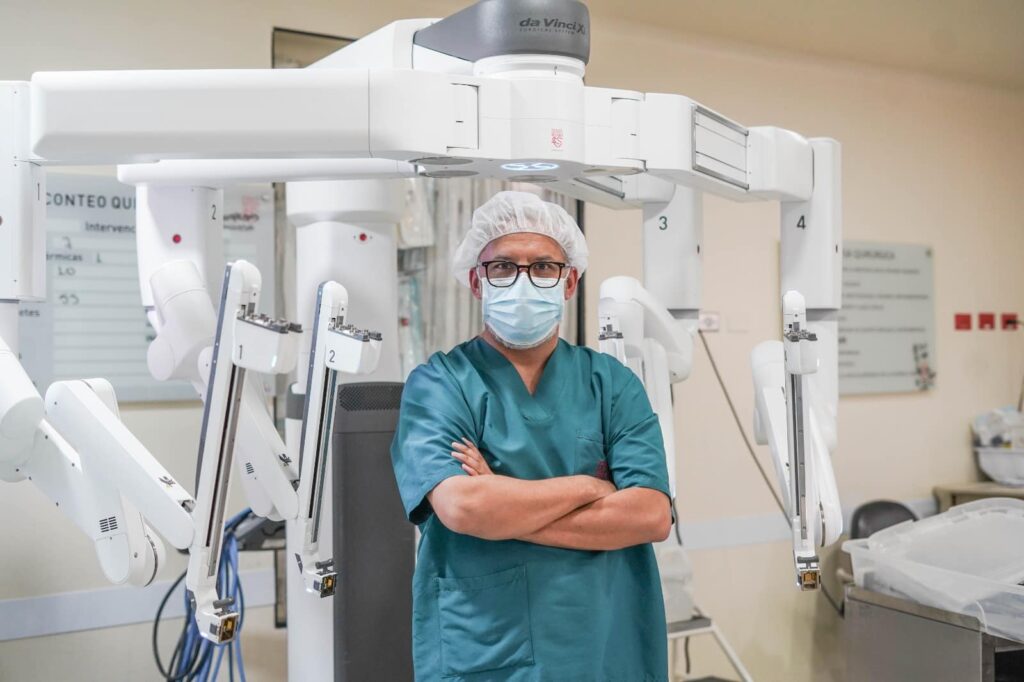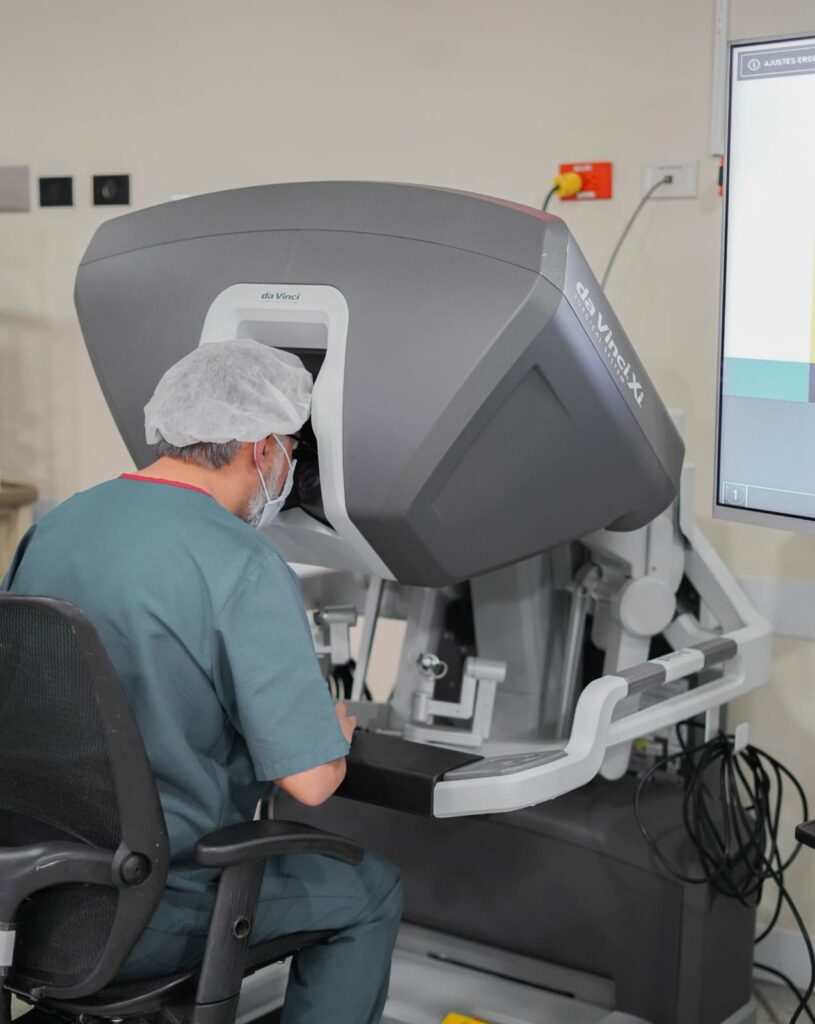This isn’t your average weight loss surgery. Dr. Rubén Luna and his team at Global Obesity Group have taken robotic bariatric surgery to the next level with a minimally invasive technique that uses just three small incisions. That means less pain after surgery and quicker recovery time—a total win.
Using the advanced Da Vinci robotic system, the surgeon sits at a console and controls the instruments with extreme precision and a 3D view of the inside of your body.

The three-incision robotic bariatric surgery is built on smart adjustments that let us keep all the precision of robotic surgery—with less invasiveness and lower cost. Here’s how it works:
Thanks to the Da Vinci robotic system, we have complete control over every move. The robot translates the surgeon’s hand gestures into extremely fine and accurate movements. That’s crucial in surgeries like a gastric sleeve, where even the smallest detail can make a big difference.
One major perk of robotic surgery? The robot completely eliminates natural hand tremors. That’s a big deal during long or complex procedures, allowing us to work with rock-solid stability from start to finish.
With just three incisions and ultra-precise robotic tools, there’s less trauma to your tissue—which means less pain after surgery and a smoother recovery.
The robot’s precision and the surgeon’s enhanced visual control reduce the chances of bleeding, accidental injuries to nearby organs, or other complications—during or after the procedure.
You might not think this matters to the patient—but it does. Since the surgeon operates from a seated console, there’s less physical strain, especially during longer surgeries. That helps us stay more focused and make better decisions the whole time.
Fewer incisions mean less visible scarring. Many patients appreciate that the scars are smaller, more discreet, and easier to care for.
One of the biggest benefits: this technique brings down the cost of robotic surgery. Using only two robotic arms instead of four helps cut down on equipment and supply costs—without sacrificing quality or safety. That makes robotic surgery a real option for more people.

Robotic surgery is performed using a remote-controlled system. And just so there’s no confusion—the robot doesn’t work on its own. It’s a high-tech tool that faithfully mirrors every movement the surgeon makes from a console.
For years, we’ve relied on robotic surgery for complex procedures involving the liver, pancreas, colon, oral cavity, and even certain gynecological surgeries. Now, we’re taking all that expertise and applying it to the world of bariatric surgery, with outstanding results.
Because we only use two robotic arms instead of four, this technique significantly cuts down on surgical supply costs.
The 3-incision technique requires just three small entry points, compared to the usual five. That results in less trauma to your abdominal wall, less post-op pain and a faster recovery.
Even with fewer incisions and fewer robotic arms, we don’t compromise on safety. The Da Vinci system still gives us the same surgical precision and responsiveness.
Nope. Both techniques use the same surgical approach for procedures like gastric sleeve. The only difference is how we access the area—the weight loss and metabolic results are the same, as long as you follow the post-op plan.
On average, it takes about the same or even less time than conventional robotic surgery—roughly 60 minutes, depending on the patient’s case. The technique is streamlined and standardized.
Not everyone. While many patients qualify, certain situations—like previous surgeries, complex anatomy, or revision cases—might require the traditional approach. That’s why a personalized medical evaluation is essential.
Even though recovery is faster and less painful, post-op care is still super important. You’ll need relative rest, a gradual liquid diet, light walking, and to attend your medical follow-ups. Staying connected with your care team is key.
Most patients are discharged within 24 to 48 hours after surgery, thanks to the reduced pain and faster recovery this technique offers.
We use general anesthesia, just like in other bariatric procedures. A specialized anesthesiologist monitors everything to ensure your comfort and safety throughout the surgery.
The only way to know for sure is with a full medical evaluation. We’ll review your history, anatomy, health goals, and more to determine if you’re a good candidate for robotic bariatric surgery—and whether the 3-incision method is the right fit.
